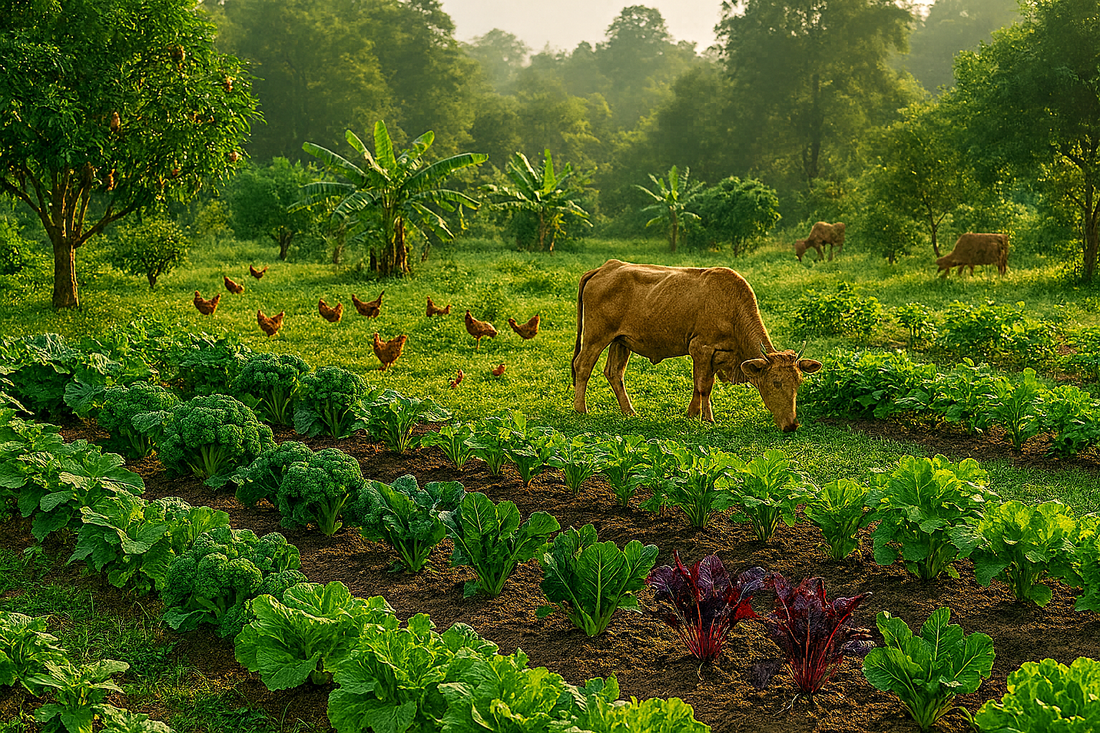
The Real Guide to Plant-Based Protein
Protein: The Foundation of Life
Every part of the human body depends on proteins. Muscles, skin, bones, blood, enzymes, hormones, and the immune system are all built from chains of amino acids — the building blocks of protein. Unlike fat, which can be stored, or carbohydrates, which can be replenished quickly, proteins cannot be stockpiled by the body. They must be supplied daily.
This means nutrition is not just about “getting enough calories.” It is about constantly rebuilding the body with the right raw materials. Without a steady intake of high-quality protein, the body cannot repair itself, defend itself, or grow. That’s why protein is rightly called the foundation of life.
What Makes a Protein “Complete”?
All proteins are built from the same 20 amino acids. Of these, 9 are considered “essential” — the body cannot make them, so they must come from food. Foods that contain all 9 essential amino acids in the right balance are called complete proteins.
Animal foods such as eggs, meat, and fish are naturally complete. Many plant foods provide only part of the amino acid set, but nature offers a solution: combinations. By mixing different plants, their amino acid profiles complement each other, creating complete protein meals. This is why traditional food cultures naturally paired grains and legumes, such as rice with beans or lentils with bread.
Plant Protein Sources
Plant-based proteins are abundant in a wide range of foods, many of which are already staples in healthy diets. Each group contributes not only protein but also other valuable nutrients:
Legumes: Beans, lentils, chickpeas, and peas are rich in protein, fiber, iron, and B vitamins. A serving of lentils provides about 9 grams of protein per 100 grams cooked.
Whole Grains: Quinoa, buckwheat, oats, and brown rice contain protein plus carbohydrates for energy. Quinoa and buckwheat are complete proteins on their own.
Nuts and Seeds: Almonds, cashews, sunflower seeds, chia, and hemp seeds supply protein together with healthy fats and minerals. Hemp seeds are notable for their complete amino acid profile.
Vegetables: While not protein powerhouses, certain vegetables like spinach, broccoli, watercress, and kale contribute meaningful amounts of protein per calorie, especially when eaten in larger quantities.
Algae Superfoods: Spirulina powder is particularly concentrated, with around 60–65% protein by weight. It contains all essential amino acids, iron, and antioxidants, making it a valuable supplement to round out plant-based diets.
Digestion and Bioavailability
It is true that some plant proteins are less “bioavailable” than animal proteins — meaning the body absorbs them less efficiently. Factors like fiber and natural anti-nutrients (phytates, tannins) can interfere with absorption. But simple traditional practices improve digestibility: soaking beans overnight, sprouting grains, fermenting soy into tempeh. These steps reduce anti-nutrients and make protein more accessible.
In many cases, a well-prepared plant protein source provides as much usable protein as animal foods, with added benefits such as fiber and phytonutrients.
The Power of Combinations
The concern that “plants don’t have complete protein” is outdated. What matters is eating a variety of plants across the day. Some combinations are classics for a reason:
Rice and beans → together form complete protein.
Hummus and bread → chickpeas plus grains balance amino acids.
Lentil stew with brown rice → a nutrient-dense, protein-complete meal.
Traditional diets across Asia, Africa, and South America developed these pairings naturally. Science now explains why they worked so well.
Organic Plant vs Organic Animal Protein
When comparing proteins, it’s important to compare fairly: organic with organic.
Organic animal protein offers high bioavailability and completeness, but requires more land, water, and feed inputs. Properly managed, animals also contribute to farm ecosystems by cycling nutrients and building soil fertility.
Organic plant protein usually requires fewer resources per gram of protein, while offering fiber and phytonutrients animals cannot provide. However, plant-based systems also depend on balanced farming, crop rotation, and soil health.
Both systems can support human health and planetary health when managed holistically. The choice is not “one is right, one is wrong,” but about balance and respect for natural cycles.
How Real Food Supports Every Diet
At Real Food, we believe in supporting every customer’s personal choice. Some feel their best with animal protein, others thrive on plant-based diets, and many enjoy a combination of both. What matters is that each diet provides complete nutrition, free of chemical residues, grown in harmony with nature.
That’s why our Real Food boxes make it simple to access the best sources of protein for your lifestyle:
Fresh legumes and seasonal vegetables from local farmers.
Organic grains and seeds to combine for complete proteins.
Spirulina powder as a concentrated option for anyone who wants extra assurance.
Pasture-raised meat, fish, and eggs for those who choose animal protein.
With this approach, you can build meals that nourish your body, respect animals, and support farmers — whatever your diet looks like.
Conclusion: Protein is Life
Proteins are not optional. They are the constant work of the body — repairing, renewing, defending, and building life itself. Whether you get them from plants, animals, or both, the important thing is that they are real, clean, and complete.
Plant-based proteins are not a compromise. When chosen well, they provide all essential amino acids, valuable micronutrients, and health benefits unique to plants. Combined with organic farming methods that sustain the earth, they become part of a bigger cycle: food that nourishes people, animals, and the planet together.
